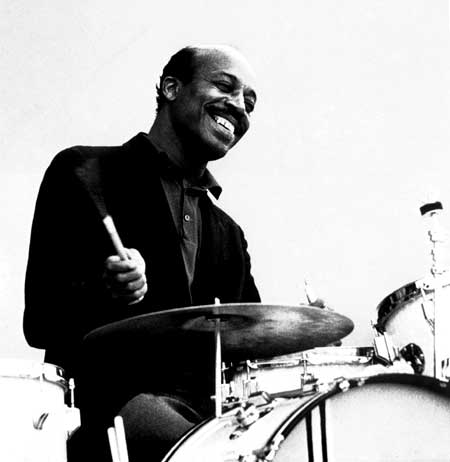 |
| Kenny Washington |
3. Practice comping using dotted quarter notes with music
By playing a simple dotted quarter note comping rhythm with your left hand, you will have a three bar phrase that uses every possible eighth note. In other words if you start on beat 1, then the next note will be on the "+" of beat 2, the following note will be on beat 4, and so on. I like this approach because it covers all the rhythmic possibilities without being too cluttered. Make sure that you are not changing the direction of your comping to accommodate your comping rhythm. Also, to make this phrase line up more clearly with the music, just add a fourth bar in which you comp freely. So basically three bars of dotted quarter note, and one bar of whatever. Focus on trying to keep your sweep sound as intact as possible and locking up with the bass player. Here is my version:
4. Comp freely with music keeping your sweeping direction steady
By the time you get to this step, you should be reasonably comfortable with the feeling of comping without changing the direction of your sweeping. The idea in this step is to practice the way you want to sound when you are actually playing with other people. In other words, try to sound good! Don't overplay or rely too much on your new technique, just use it when its appropriate. If you feel like you have to do extra thinking every time you want to comp in your awkward direction, then you probably aren't ready to use this technique in a real musical situation. It has to be easy. Also, this is a good time to try to pick up some ideas from Kenny Washington's beautiful and spare playing on this song if you haven't already. Here is my version:
Overview
- Start by practicing comping in your awkward direction with just your left hand
- Practice only comping in your awkward direction with music
- Practice playing dotted quarter notes with music
- Comp freely with music
I like to go through "Lorelei" five times in a session, focusing on whatever of these steps is giving me trouble. Just from the last several weeks of practicing like this almost every day I have noticed a significant improvement in the depth of my left hand comping. It's not quite where I would like it to be, but this exercise has really been helping.
I hope you enjoy the exercise, let me know if you have any questions.





